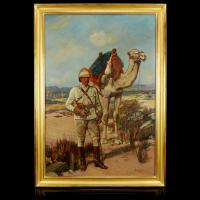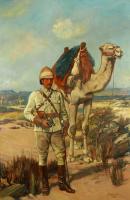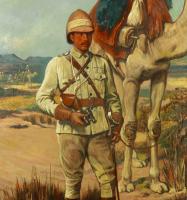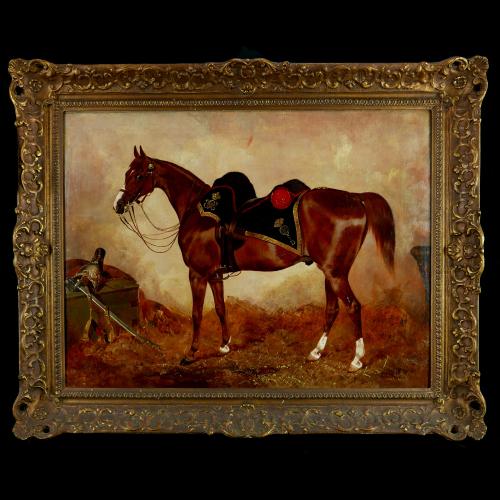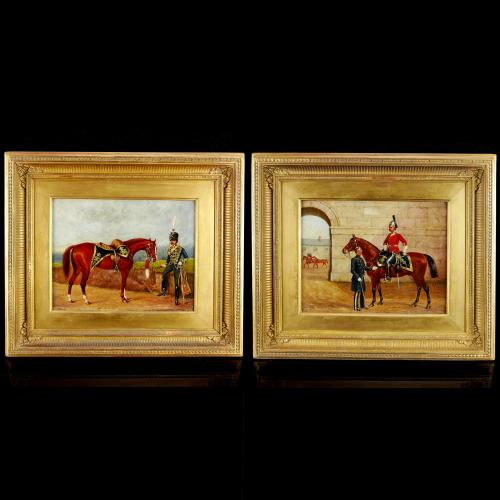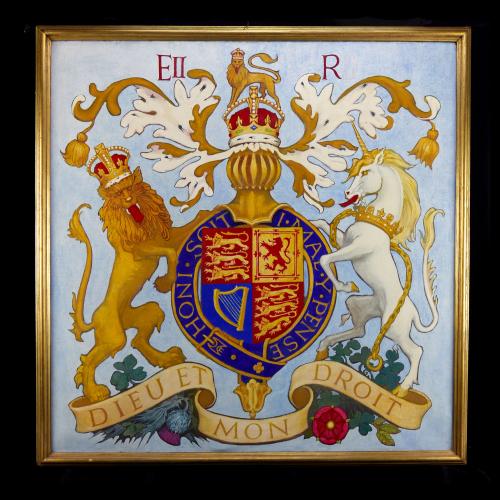
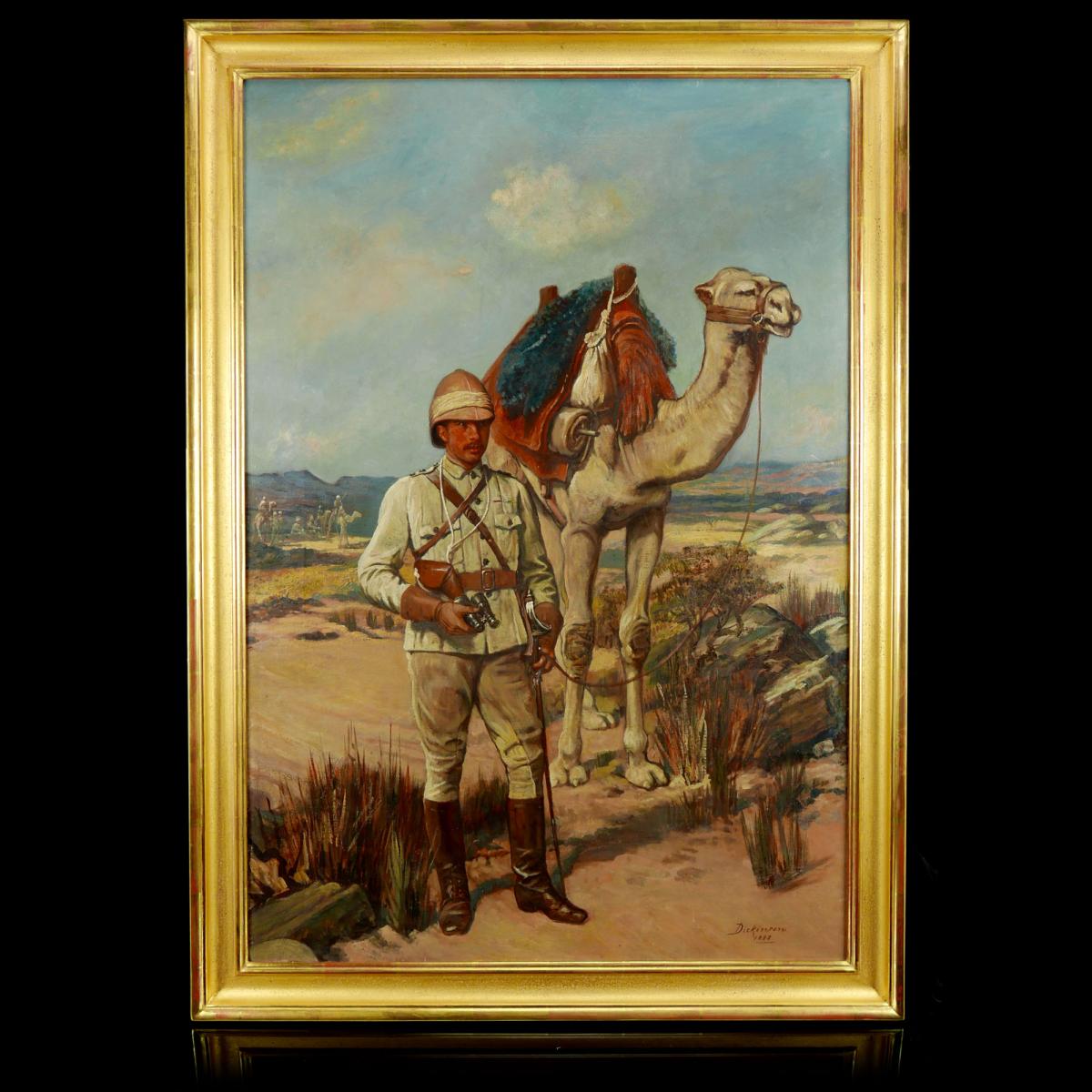
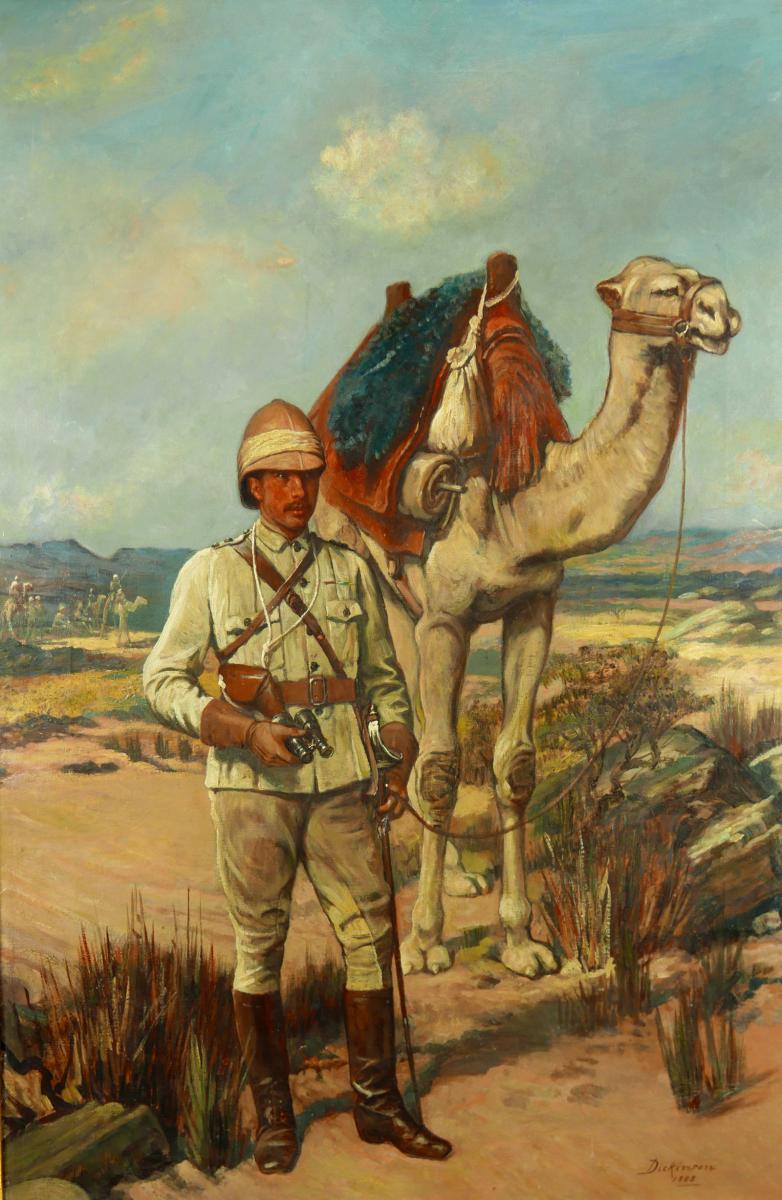
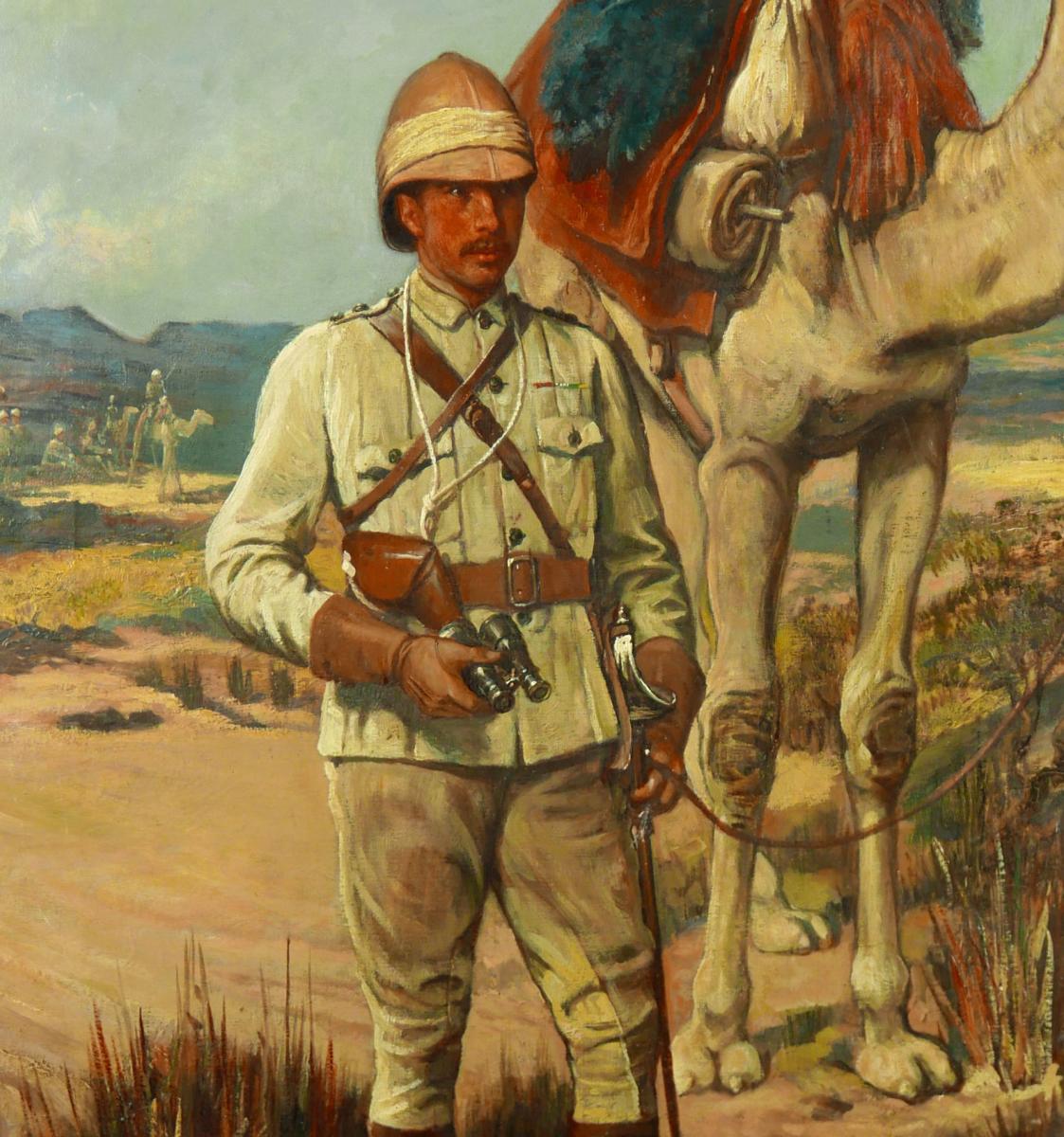
Price
£7800.00This object is eligible for a Certificate of BADA Provenance
The BADA Standard
- Since 1918, BADA has been the leading association for the antiques and fine art trade
- Members are elected for their knowledge, integrity and quality of stock
- Our clients are protected by BADA’s code of conduct
- Our dealers’ membership is reviewed and renewed annually
- Bada.org is a non-profit site: clients deal directly with members and they pay no hidden fees
Egypt and Sudan Campaigns - Portrait of a British Officer and Camel, 1883.
Overall: 102cm (40in) x 71cm (28in).
Oil on canvas. Full length portrait of British officer in campaign dress comprising grey serge frock coat with Bedford cord pantaloons and home service boots, beside his camel in a desert setting.
Canvas: 91cm (35.7in) x 61cm (24in). Signed and dated lower right ‘Lowes Cato Dickson 1883’.
1883 was a watershed year in the history of modern Egypt. A military coup d’etat against the Khedive had been crushed the year before by British forces protecting European interests in the Suez Canal. By Khedivial decree of December 1882 the British took over responsibility for the Egyptian army allowing the bulk of British troops to leave the country. In early 1883 Sir Evelyn Wood VC was appointed the first Sirdar, and twenty-five British officers were selected to do duty. Among these were Andrew Haggard, brother of the author H. Rider Haggard, Reginald Wingate and a madcap Shropshire Light Infantry subaltern called Chamley Turner. Turner is noted as unyielding character who fought the severe Egyptian cholera outbreak of 1883 by dosing himself with the same concoctions he prescribed to his men, often taking it from the same glass. Needless to say he caught the disease but recovered, only to die by drowning in the Nile while on a camel-buying expedition.
Despite the dangers and high mortality rate through disease and accident, the Egyptian service was an attractive proposition. The pay, at £450 per annum for subalterns, was good, promotion automatic as all officers stepped up at least one rank on joining and none ranked lower than bimbashi (major). There were considerable opportunities for active service which in no way daunted potential applicants whose military record had to be impeccable, standards of horsemanship, musketry and other martial arts high and knowledge of spoken and written French (the language of the educated classes in Egypt) above average. Furthermore, they were required to pass an examination in colloquial Arabic within six months of joining. A higher examination could be taken after a year but few officers passed this, notable exceptions being the future Sirdars Kitchener and Wingate. Their contracts were for two years renewable. Married officers were generally ineligible.
1883 also saw the beginning of the Camel Corps in the Egyptian Army with the selection of twenty men to be mounted on dromedaries. By the end of the year this had expanded to a company of 200 Egyptians under six British officers at Cairo. The Camel Corps at this time was commanded by Lieutenant R.A. Marriot, Royal Marine Artillery. During the course of 1883 a Khedivial army under hired ex-Indian Army officer General Hicks was destroyed in Kordorfan by the Mahdi, forcing General Gordon and the remain Khedivial forces in Sudan into the confines of Khartoum. Ultimately the Egyptian Camel Corps would cut its teeth on the Gordon Relief Expedition of late 1884 and early 1885, alongside the British manned and specially created Heavy Camel, Light Camel, Guards Camel and Mounted Infantry Camel regiments.
Our officer’s black buttons and rank badges suggest a rifle regiment of which 2nd Rifle Brigade and 3rd King’s Royal Rifle Corps were serving in Egypt from the time of the Anglo-Egyptian War of 1882 and in 1884 contributed officers and men to the Mounted Infantry Camel Regiment.
Lowes Cato Dickinson (1819 to 1908) was a long-lived and prominent portrait painter of the Victorian Age and a close friend to members of the Pre-Raphaelite movement such as Millais, Ford Maddox Brown and Rossetti. Dickinson began his career in the workshops of his father, a lithographer in Bond Street. On his father’s death he took over the business with his two of his brothers. Lowes had chiefly made lithographic portraits for his father but in the mid-century the brothers branched into the new field photography. Dickinson began to use photographs to paint portraits of subjects too busy or otherwise unavailable to sit for him. It seems Dickinson concentrated on the faces and hired others (including his friend Maddox Brown and other Pre-Raphaelites, when they were short of cash) to complete other details. Meanwhile his brothers built the photography practice, setting up photographic studios in Brighton and in Scarborough in addition to their Bond Street offices in London.
By 1868 Dickinson was a well-established portrait artist. He was chosen to paint an ensemble picture of Prime Minister Gladstone’s Cabinet in that year and he decided to leave the family business to concentrate on painting. Dickinson continued to paint into his eighties and left a prolific body of work. He regularly exhibited at the Royal Academy of which he was a member. There are over fifty of his works in the National Portrait Gallery today. He painted portraits of many distinguished sitters including George Eliot, Queen Victoria and Lord Roberts VC. Dickinson was also a pioneering Christian Socialist and founder of the Working Men’s College in London, set up to provided working class artisans with a free liberal arts education. From the 1850s onwards he taught there regularly along with friends with similar views. These included John Ruskin, Ford Maddox Brown and Thomas Hughes, author of Tom Brown’s Schooldays.
Sources:
Keays Bey, G.A.V. (1939) ’Notes on the history of the Camel Corps’, Sudan Notes and Records, Vol 22, University of Khartoum.
Keown Boyd, H. (1986) ‘A Good Dusting, The Sudan Campaigns, 1883-1899, Secker and Warburg, London.
The BADA Standard
- Since 1918, BADA has been the leading association for the antiques and fine art trade
- Members are elected for their knowledge, integrity and quality of stock
- Our clients are protected by BADA’s code of conduct
- Our dealers’ membership is reviewed and renewed annually
- Bada.org is a non-profit site: clients deal directly with members and they pay no hidden fees


